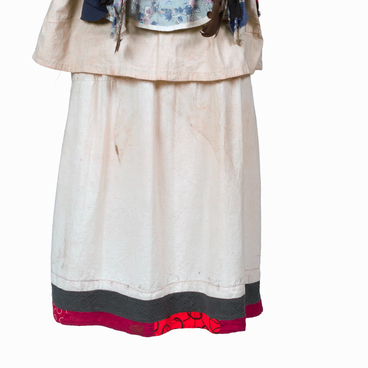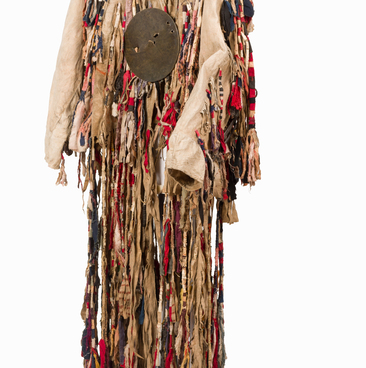The Udege people knew well the water and land routes of communication and often combined them when traveling long distances. When traveling by water, they usually used dugout boats. There were two types of boats in terms of stern and bow design: pointed omorochki boats and baht-boats with shovel-shaped bows.
A baht was a cargo boat, it was strong enough to overcome high waves and rapids on fast mountain rivers. The boats had different lengths depending on the cargo: four- or five-meter vessels were suitable for a light load, while a boat for a large load had to be seven or eight meters long.
The carrying capacity of such a boat was up to one ton. The weight was evenly distributed in the middle, and people sat in the stern and at the bow. The baht was made of poplar trunk. The complicated process of making a boat consisted of many steps and required certain expertise and experience.
After the Udege craftsman found a tree of the necessary size, he felled it in the right direction, and stuck a twig of the same tree into the stump, which symbolized his soul. If this was not done, the Udege believed that one day the boat would overturn in the river and the master of the boat would perish.
It was forbidden to make a boat from a tree that had been thrown ashore, felled by a storm in the taiga or struck by lightning. It was believed that the souls of such trees were in the afterlife. The bottom of the dugout had a half-meter long and slightly rounded shovel-shaped extension raised above the surface of the water.
A through hole was drilled at the base of the shovel bow to allow water to escape if it landed on the shovel. This design slowed down the boat in fast-flowing rivers. The half-finished boat was carried from the place of its manufacture in the taiga to the river bank. There it was placed on rollers and fired with birch bark.
Then the process of installing crossbars, drying and tarring took place. Udege people believed, they could not steam and finish a boat at the place where it was made, otherwise its owner could soon die and the boat would become his last refuge.
It took two Udege men
about two weeks to make one big baht. It took eight days to prepare and dry the
material, and six days to chisel the boat itself. In case of urgent need, the
boat could be made in four days.





